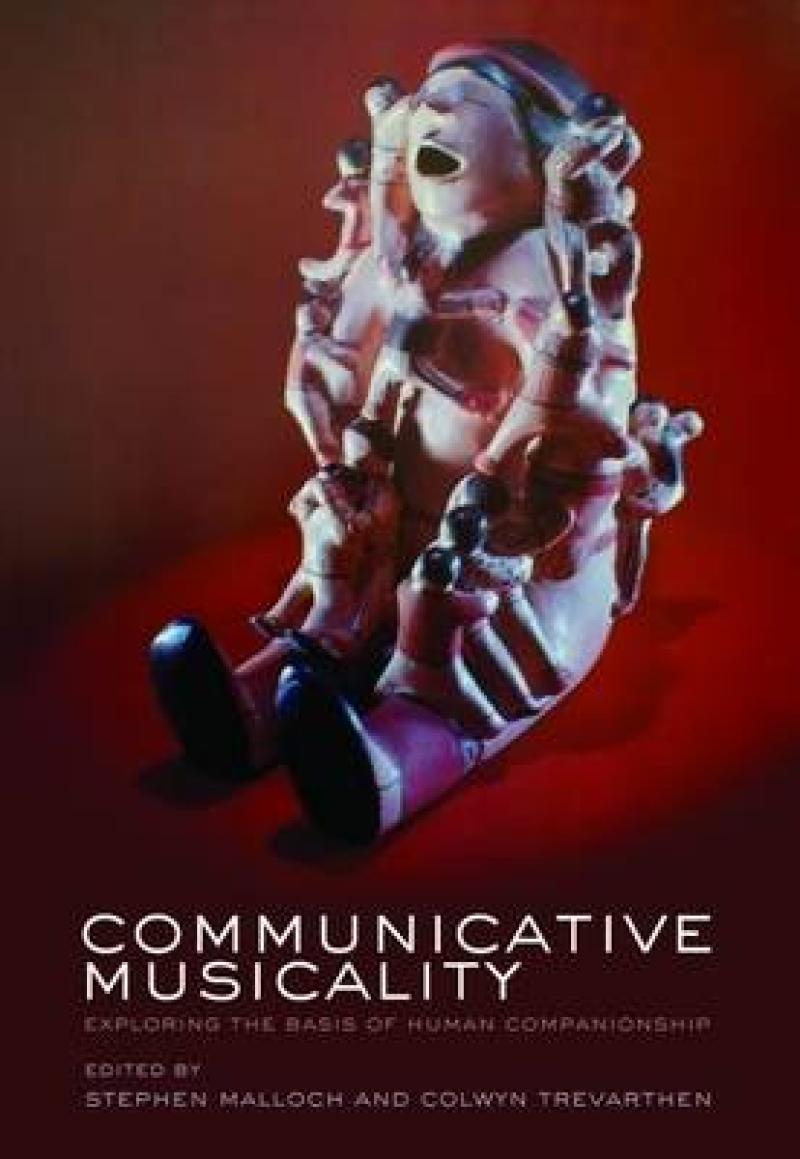'Communicative Musicality' explores the intrinsic musical nature of human interaction. The theory of communicative musicality was developed from groundbreaking studies showing how in mother/infant communication there exist noticeable patterns of timing, pulse, voice timbre, and gesture. Without intending to, the exchange between a mother and her infant follow many of the rules of musical performance, including rhythm and timing.
This is the first book to be devoted to this topic. In a collection of cutting-edge chapters, encompassing brain science, human evolution, psychology, acoustics and music performance, it focuses on the rhythm and sympathy of musical expression in human communication from infancy. It demonstrates how speaking and moving in rhythmic musical ways is the essential foundation for all forms of communication, even the most refined and technically elaborated, just as it is for parenting, good teaching,
creative work in the arts, and therapy to help handicapped or emotionally distressed persons.
A landmark in the literature, 'Communicative Musicality' is a valuable text for all those in the fields of developmental, educational, and music psychology, as well as those in the field of music therapy.
Read more
'Communicative Musicality' explores the intrinsic musical nature of human interaction. Groundbreaking studies have demonstrated that in mother/infant communication there exist noticeable patterns of timing, pulse, voice timbre, and gesture.This landmark book examines the nature of musical expression in human communication from infancy upwards.
Read more
1. Musicality: communicating the vitality and interests of life ; PART 1 - THE ORIGINS AND PSYCHOBIOLOGY OF MUSICALITY ; 2. Root, leaf, blossom, or bole: concerning the origin and adaptive function of music ; 3. Music and how we became human: a view from cognitive semiotics - exploring imaginative hypotheses ; 4. Ritual foundations of human uniqueness ; 5. The evolution of music: theories, definitions and the nature of the evidence ; 6. Tau in musical expression ; 7. The neuroscience of emotion in music ; 8. Brain, music and musicality: inferences from neuroimaging ; PART 2 - MUSICALITY IN INFANCY ; 9. Infant rhythms: expressions of musical companionship ; 10. Voices of shared emotion and meaning: young infants and their mothers in Scotland and Japan ; 11. 'Music' and the 'action song' in infant development: an interpretation ; 12. Early trios: patterns of sound and movement in the genesis of meaning between infants ; 13. The effects of maternal depression on the 'musicality' of infant-directed speech and conversational engagement ; 14. The improvised musicality of belonging: repetition and variation in mother-infant vocal interaction ; PART 3 - MUSICALITY AND HEALING ; 15. Music for children in zones of conflict and post-conflict: a bio-psycho-social paradigm ; 16. Between communicative musicality and collaborative musicing: a perspective from community music therapy ; 17. Supporting the development of mindfulness and meaning: clinical pathways in music therapy with a sexually abused child ; 18. The human nature of dance: towards a theory of aesthetic community ; 19. Therapeutic dialogues in music: nurturing musicality of communication in children with autistic spectrum disorder and Rett syndrome ; PART 4 - MUSICALITY OF LEARNING IN CHILDHOOD ; 20. Musicality in talk and listening: a key element in classroom discourse as an environment for learning ; 21. Spontaneity in the musicality and music learning of children ; 22. Vitality in music and dance as basic existential experience: application in teaching music ; 23. Intimacy and reciprocity in improvisatory musical performance: pedagogical lessons from adult artists and young children ; PART 5 - MUSICALITY IN PERFORMANCE ; 24. Bodies swayed to music: the temporal arts as integral to ceremonial ritual ; 25. Towards a chronobiology of music ; 26. Musical communication: the body movements of performance ; 27. Communicative musicality as creative participation: from early childhood to advanced performance
Read more
the wide-ranging scope of the text makes it of interest to a varied audience. * Helen Daynes, King's College *
Product details
ISBN
9780198566281
Published
2008
Publisher
Vendor
Oxford University Press
Weight
1282 gr
Height
253 mm
Width
178 mm
Thickness
39 mm
Age
05, 06, UU, UP, P
Language
Product language
Engelsk
Format
Product format
Innbundet
Number of pages
648
